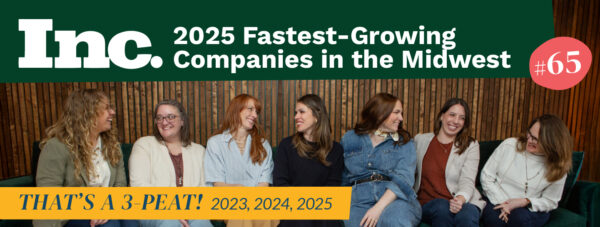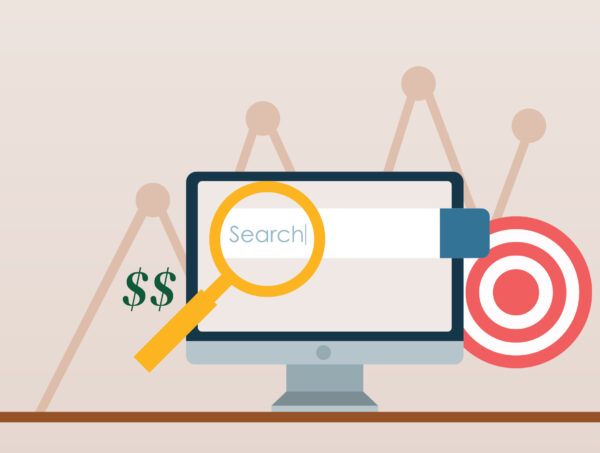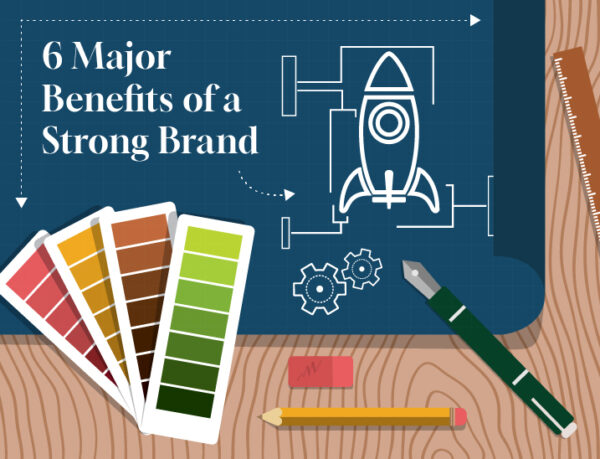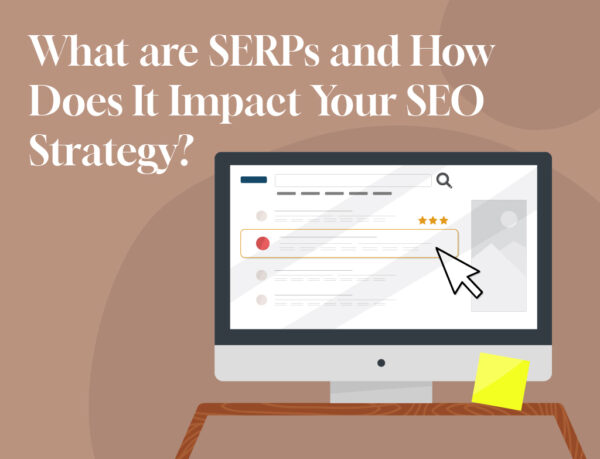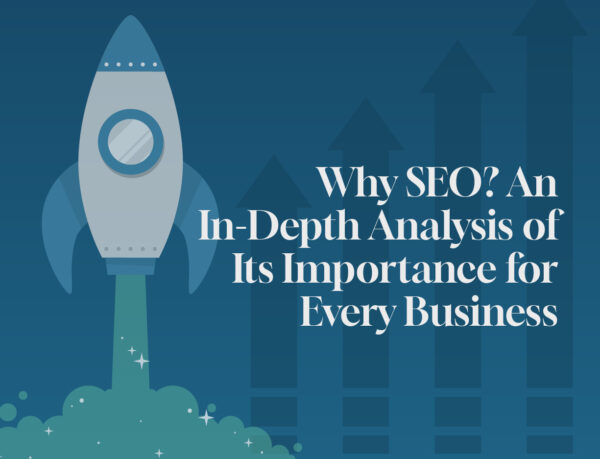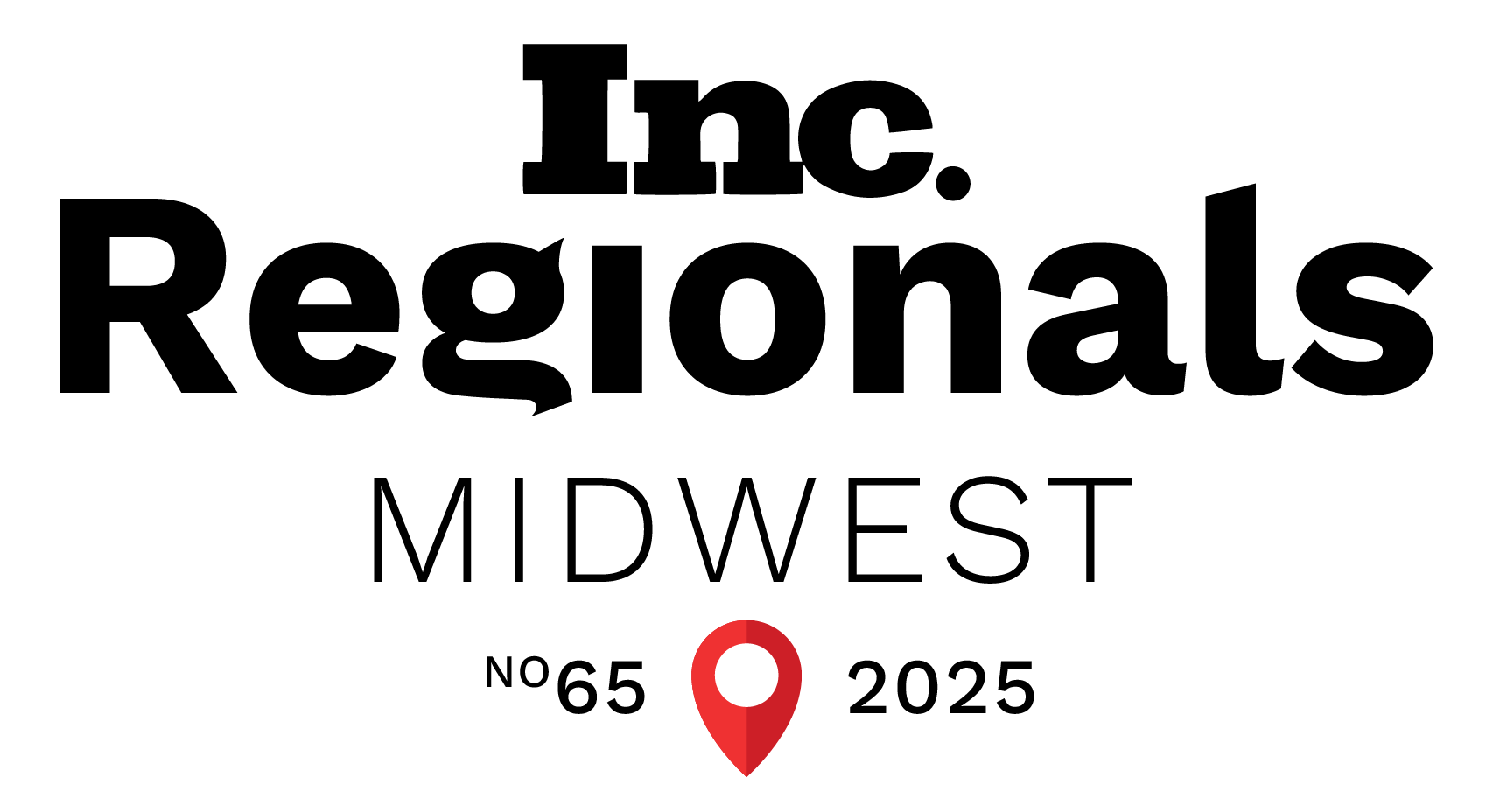The Power of Buyer Personas

In This Article
Picture your favorite movie, show, or book character. Keep their image in your mind. Now ask yourself this: What makes this character unique from others? Do you share similar interests, likes, and dislikes? Whatever your answers may be, this character has specific attributes that stand out to you.
A customer persona functions in a similar way, but as a character for your business. As characters in your business’s story, your marketing personas give life to who you want to market to so you have a better idea about your customers’ needs, wants, and constraints.
In this article, we’ll cover the buyer persona definition, why it’s a good idea to create buyer personas, how to create a buyer persona, how to write a buyer persona, and how the folks here at Metric Marketing use inbound marketing personas in everyday marketing.
What Is a Buyer Persona?
Buyer personas, also known as customer personas, are semi-fictional characters that represent your target audience—people who you want as “characters” in your customer base. When you know your customer persona, you know exactly who you are marketing to. When you know just who you are marketing to, you can create an effective and targeted marketing strategy that attracts your buyers.
Your buyers have questions that need answers and needs that need to be met. When you have an image of who your customers are by creating customer personas, you will know how to create content that is curated specifically to one of your customer bases. When you focus on marketing to a specific character, you can then build an entire life story and narrative around them.
Similar to interpersonal relationships, the more you get to know your singular customer (via their customer persona), the better you can communicate with them about the product and/or service you and your business provide. Your business can—and should—have multiple customer personas, each with in-depth descriptions, as if they were real people, so you know who to market to.
There are quite a few names for buyer personas that are used in marketing language. To avoid confusion, the term “buyer persona” is synonymous with customer persona, marketing persona, and target persona.
Why Create Buyer Personas?
One of the best ways to create content and promotional campaigns that truly engage your various target audiences is by creating buyer personas.
Each one of your target markets—and therefore, your buyer personas—is different; they are attracted to you for different reasons, they may live in different locations, they may fall within different demographics, and they certainly have different questions about your product or service, which means they’ll be using different terms to search on Google.
By creating customer personas, you are getting to know each customer segment. And once you do, it’s game over. When done successfully, your marketing team will be able to understand the ins and outs of your various personas—who they are, where they consume their information, and how they make a purchasing decision. Knowing this information about your customer persona allows your content and promotional campaigns to reach your targeted audiences when it matters most and to cater to their specific needs.
Persona Development in 5 Steps: How to Create a Buyer Persona
Here at Metric Marketing, we know how dependent marketing strategies are on buyer personas. A lot of work goes into developing one, which is why we’ve created a comprehensive five-step list covering all you need to know about developing an inbound marketing persona.
Step 1: Buyer Persona Research
Creating customer personas means doing market research. Don’t worry, you’ve got this! You may already have an idea of your target audience. But getting into the nuances will take some research.
Let’s take a look at where to start that research.
Who Should Be Involved in Creating Your Buyer Personas?
What better place to start than with your existing customers? This means that the frontline employees at your company will best know who your customers are.
- Account managers: The first step in creating a buyer persona is talking to your account manager about who your clients and customers are. As the face of your company for many of your customers, your account managers will have the most insight into how to spark up a conversation with customers and clients so you can begin your buyer persona research.
- Customer-facing employees: Talk to the employees on the floor who most often interact with customers every day. They already know the types of people who shop at your business, so they will be a good resource to offer you insight into who your current customers are.
- Current clients and customers: Your current customers have already invested time and money in your business, products, and/or services. A customer currently using your products or services is already inherently one of your ideal customers. They have a need your business meets. The more you get to know the people who already buy from you, the more you can learn about how to more efficiently and successfully market to their needs and concerns.
- Ideal customers: You know your current customers, but in order to expand your business, you probably need to sell to an even broader audience in the future. Who do you want to be your customer? There may be a reason why you haven’t been able to reach them yet. It may be that your competition has monopolized a certain audience that you want to reach. Your competition’s customers are really who should be involved in creating your buyer personas. You provide something they need. By creating a customer persona around them, you will know how to better communicate to this untapped customer base.
- Past Research: Here at Metric Marketing, we operate using research-based decisions. Look at your past pay-per-click (PPC) ads, social media followers and analytics, website trends, and other data to gain a firm grasp on who views your ads and website. Your reports will show you the numbers you need to have to make informed decisions to develop a marketing persona based on who your current viewers and customers are.
How to Find Participants for Persona Research
You know who you want your customer personas to be based upon. Now you need actual people to base your semi-fictional customer persona on. Conducting market research and finding participants can be done in several ways.
- Interviews: We will discuss interview tips and questions below for a well-rounded, informative interview.
- Surveys: Send out an email and/or social media survey for your existing audience to fill out.
- Observational research via social media: Look at online profiles of people who follow you and those who you want to be followed by. Note who they follow, the content on their feed, and what they post. You’ll get ideas of who they are and hopefully inspiration for your content.
Once you have found participants, you need to be sure you can get them on board to work with you. Before you dive right into your persona research questions, though, it will help to clarify the purpose of your interview so that the person or people you are talking to will be willing to fully participate in your research. This is especially true if you are speaking with people who are not customers but are the type of people you want as customers. Here are some ways to ensure a high response rate for your prospective interviewees.
- Make sure they know it’s not a sales call. The last thing people want is to be on the phone for an hour-long sales pitch. People may get frustrated and not want to give you answers that can help you develop your customer persona. Clarify that you just want to ask them questions to learn from them. You’re calling to get to know them, not to sell them anything.
- Work around their schedule. You need to be flexible. Have them provide the best times they can meet. They are offering you their time and information, so being flexible with their schedule is the best way to approach meeting times. Once you’re aware of their availability, then send them a calendar invitation.
- Offer gift cards or other incentives. Give discounts, gift cards, or other incentives to interviewees as a thank you for participating.
- Know how many people you’ll be interviewing. There really is no magic number as to how many people you should interview to gather the best information to create a marketing persona. However, when the interviewees’ answers become predictable to the point where you know what they’ll say before they say it, you probably already have a decent grasp of who your customer persona is. Once you have developed your first few buyer personas, you can then use this step to know how many buyer personas you should
Solidifying your interviewees for your research is one of the most important steps in creating a buyer persona. Without them, you have no base to build marketing personas in the first place.
Questions to Help You Structure Persona Interviews
Now that you have your participants for your persona research, it’s time to gather the information you need to create an informed customer persona. It may be best to organize your questions categorically by how you will organize your marketing persona’s information. Below are questions to get you started on your interview research:
- What is your job title and role?
- What does your daily work routine look like?
- What skills, knowledge, and tools are required for your job?
- What are you in charge of at work?
- Who is in charge of you at work?
- What is the size of your company in both revenue and employees?
- How do you define success at work and in life?
- What are your hobbies and interests outside of work?
- Do you have a family?
- Who is in your family?
- Where do you live?
- What is your highest level of education?
- Describe a purchase you made recently and why
If you are talking on the phone—or you can also ask these questions in an online or written survey—follow up by asking “Why?” after your questions. Get your interviewees to reflect on their answers.
The research part will most likely be the most time-consuming part of creating a customer persona. Once you’ve gathered your research, you’re ready to compile the information and create your Buyer Persona!
Step 2: Segmenting Your Buyer Personas
Congrats! You’re onto the next step. Researching for buyer personas takes a lot of time and energy, but now that you’ve put the work in, the rest is really just about organizing your findings!
Segmenting your buyer personas into categories will help you get a better feel for who your marketing persona(s) will be. During this step, you may find that with all the information you’ve gathered, you can create multiple marketing personas. Organizing your information can help you understand how to identify personas.
Begin by looking at consistencies in answers. You can then group the similar answers into singular groups which will then become your buyer personas. If this is your first time creating buyer personas, it may be best to start small. Set a limit for buyer personas. Maybe, for now, your limit should be one. You can always go back and add/create more.
Other ways of segmenting customers for buyer personas include:
- Industry-specific customer personas: At Metric Marketing, even though we have clients from a variety of different fields, we specialize in three main industries. Therefore, we have created industry-specific buyer personas for each industry we work with. We provide similar services for each, but communicate with the industries differently.
- Job title customer personas: If your customer base is focused on only one industry, you can create marketing personas for each of the members within the field you serve. Each job title in an industry has its own goals and objectives. Knowing the differences between job duties within one industry can broaden your audience by using different communication, content, and marketing tactics.
*A tip on segmenting: If you’re a visual person, it may help to make flashcards of the answers your interviewees gave you. Take all of the individual answers and mark them with the ways you can separate/tier answers. This may give you a better visualization for the multiple types of marketing personas you can develop from your interviewees.
Step 3: Building Out Your Buyer Personas With Names and Stories
It’s now time to tune into your inner storyteller. What? Storytelling? What does this have to do with buyer personas?
Well, just about everything! Simply put, you need engagement, and you get engagement by knowing your audience, and I mean really knowing them. Buyer personas tell a story of who your target audience is, wrapped into a consolidated character—or characters.
Buyer personas include a variety of topics. Note that there is not a specific formula, but there are some common categories.
- Demographics: What is the age, ethnicity, and location of your persona? Who’s in their family? Be specific to adhere to the wants and needs of particular demographics. It may not be helpful to promote electric scooters in rural areas or sell lawnmowers to city residents.
- Business info: What is their job position? How long have they been at their place of work? What is their income? This may allow marketing to specific income and business brackets, which is especially helpful on digital advertising channels like LinkedIn and Facebook.
- Interests: What does your persona like? What are their hobbies? Their passions? Knowing your audience outside of the business world connects you on a personal level and helps build trust.
- Weaknesses and pain points: it may sound harsh, but hone in on potential roadblocks. Knowing your target audience’s dislikes, distractions, and pain points may help you decide what to include and/or exclude in your content. We’ll cover this further in the next section.
Have fun with this step in your marketing persona development. A tip for developing your content persona: Set a time frame—say 15-25 minutes—to sit down and write down everything you can about your character. This is a free-writing exercise.
Tune into their narrative, get to know them, and develop their story. Make your customer persona realistic. This way, when creating content for this character, it will essentially be like your team is creating content for a real person. So grab your pen, paper, or laptop, and get writing!
Step 4: Understanding Your Persona’s Goals and Challenges
Whew, that was intense! And you didn’t think you were a writer—look at you go! Now that you have some stories to work with, let’s get to the heart and soul of your marketing personas. Understanding the goals and challenges of your customer persona will help you develop marketing strategies for future marketing practices.
Your customer persona’s goals are the key indicators of what their future needs will be. Knowing their goals means you now know how you can genuinely provide for them. Refer back to that free-writing exercise you just did. Look at the goals you created for your buyer persona. It may not be obvious, so take your time to scan and highlight notable future plans. Buyer persona examples of goals may include:
- Are they planning on starting a family?
- Are they going to retire soon?
- Do they want deeper relationships with their existing customers?
- Do they want to start a new business project?
When you know an objective, you can market to the specific goals your target persona has. Direct marketing can boost your business and provide a solution to a need.
The same mindset can be applied to your customer persona’s challenges. In fact, your target persona’s challenges may be one of the most important components of marketing persona development. When you know each challenge a customer persona has, then you can figure out how you can problem-solve for them to overcome that challenge. When you are using your free-writing exercise to find your persona’s challenges, consider:
- What is stopping them from reaching a goal (see above)?
- Are they having trouble communicating a goal to a family member? Their boss? Their employees?
- What are they afraid of?
- Where in life are they distracted? Is that distraction stopping them from achieving a goal?
Find qualified leads by providing direct solutions to challenges you discover in your buyer personas. Show off how your business can help with a need and challenge. You can let customers know that you not only recognize a challenge they have—one that they may not even know they have—but you can also provide a real solution.
Step 5: Know Your Buyer Personas & Think About Them When Marketing Your Business
Your customer persona or personas are here for you to use as a tool. Keep them at the forefront of your mind when creating your marketing strategy. Marketing, in a nutshell, is all about how you communicate with your audience. Obviously, there is a lot more to it than that—that’s what you have us for—but knowing who your audience is is one of the most crucial elements to developing a research-driven, foundationally sound marketing plan.
This last and final step is one that you will repeat every time you create a new digital marketing campaign. When you know your inbound marketing personas well, then you can cater your marketing to their needs, goals, and challenges. The more you focus on your marketing persona, the more you will familiarize yourself with the specific language used for each target persona, allowing you to create content just for them.
After creating a campaign for a buyer persona, take a look at your analytics. How are your ads performing? Are you reaching the target persona you’re aiming for? If not, reevaluate either your customer persona details or your marketing strategy.
Your customer personas are meant to help you communicate with the audience you want to reach. After developing sale ads for each buyer persona, you will see major growth that increases your traffic, leads, and revenue.
Buyer Persona Examples
Let’s look at Procter & Gamble’s (P&G) “The Look” commercial. It’s an advertisement that addresses the biases Black men in America experience. This call for action is objectively empathetic. By producing this commercial, P&G tells Black men, as well as others who feel the same way about racism, that P&G is anti-racist.
Here’s the thing: P&G makes Tide detergent, Pampers diapers, Charmin toilet paper, and other similar products. What does this have to do with anti-racism?
The answer? Their audience. Nowhere in the commercial does P&G say “buy our product,” but by creating content that is specific for a persona, they strategically place their company in a societal conversation that empathizes with their audience. This trust-building attracts people to their company.
Even further, the main character is a dad who clearly cares about his son. Coincidence? Think again. Who buys products like diapers, razors (Gillette), and Mr. Clean Magic Erasers for those crayon-on-the-wall incidents? Dads do. All products that P&G produces. That is the power of creating buyer personas. When you know your audience, you know what to create.
How Metric Marketing Uses Buyer Personas
As a digital marketing agency, we use a customer persona for every single paid search campaign, social campaign, and piece of content that we make. Digital marketing, at its core, is about connecting with your audience. Your audience is current and future customers who have a need that you can meet. With this as a driving factor, our team here at Metric Marketing creates buyer personas that are company-specific, customizing each of our client’s buyer personas from scratch to make informed, data-driven marketing decisions for them.
Buyer Personas Help Inform Marketing
We constantly refer to each client’s customer personas to inform marketing decisions. We do this because we believe in personalized marketing and know for a fact that individualizing marketing ads and campaigns is the best way to connect with your audience. Each of our social and PPC ads is customized to target each buyer persona based on the segmenting steps we stated above.
In practice, an example of this is when we make different social campaigns based on different marketing personas. We will create different ads for Facebook and LinkedIn based on the customers who use those social media platforms. The language used differs between the platforms, just based on the different audiences we are trying to reach.
Buyer Personas Help Inform Sales
Not only are customer personas used for marketing, but we also use them to guide audience members down your marketing funnel. We can use your customer persona to direct your customers at each stage of their buying process.
You can use your customer persona to both help design your website and to map out advertisements for each sales stage. Then, by analyzing metrics like your website’s bounce rate and lead generation insights, you can continue expanding and altering your website to best fit your customer persona’s preferences.
Here’s an example that looks more closely at ads: If one advertisement isn’t showing a greater lead generation than an ad you ran last year during the same timeframe, you can compare the two ads to make a more informed decision about future ads.
All of this has to do with how your targeted audience responds to the marketing decisions you made that were based on your customer persona’s tastes. We have found that this process leads to an increase in return on investment (ROI) and a decrease in cost-per-lead.
Examples of Client Success Stories
We often get the question “How many buyer personas should I create?” The answer differs depending on who you are as a business and where you are in your marketing strategy. Developing customer personas—and knowing how to write a buyer persona—is one of our first steps in developing a marketing strategy with our clients. Our team of experts has the knowledge and experience to make the correct amount of detail-oriented customer personas your business needs.
We have used buyer personas for a life science agency marketing campaign that resulted in their website gaining increased traffic with the specific clientele they were—and still are—looking for. We’re happy to say that, thanks to knowing the buyer persona and applying that target persona to their audience, the agency’s organic traffic increased 132% YoY in 2020. We continue to work alongside Akadeum to keep growing their digital marketing.
When working with law firm Wilson Kehoe Winingham, knowing their target persona allowed for informed marketing decision-making. The firm has since experienced a 2x increase in their preferred case types.
Knowing who to market to matters. Customer personas are the sure way to know who you’re reaching and how to reach them. If you apply target personas as we have—and continue to do—with Wilson Kehoe Winingham, you can target a key audience who has needs your business can meet.
Reach Out to Metric Marketing for a Consultation
Defining your target audience by building buyer personas can increase user engagement and allow you to focus on leads, ultimately advancing your SEO. If you have questions or need assistance creating your buyer personas, reach out to us today! We’d love to talk with you.
Must-read articles
Looking for something else?
There's so much more
Ready to Inquire?
